Welcome to BirdTech 101! Earlier last week I received my Haikubox. The company, Loggerhead Instruments Inc., describes their device as an “automatic and continuous birdsong” ID system. The small device using data from Cornell’s BirdNET Sound ID identifies and records birds within the audio range of a HaikuBox. The box must be located outside the home, hooked up to an electrical outlet (not able to be powered by batteries), and within range of wifi. Here is a photograph of my Haikubox (the box is less than one inch tall):
And an image of my Haikubox and two DECKO Trailcams (see review). This setup allows me to easily move the Haikubox and trailcams around my yard.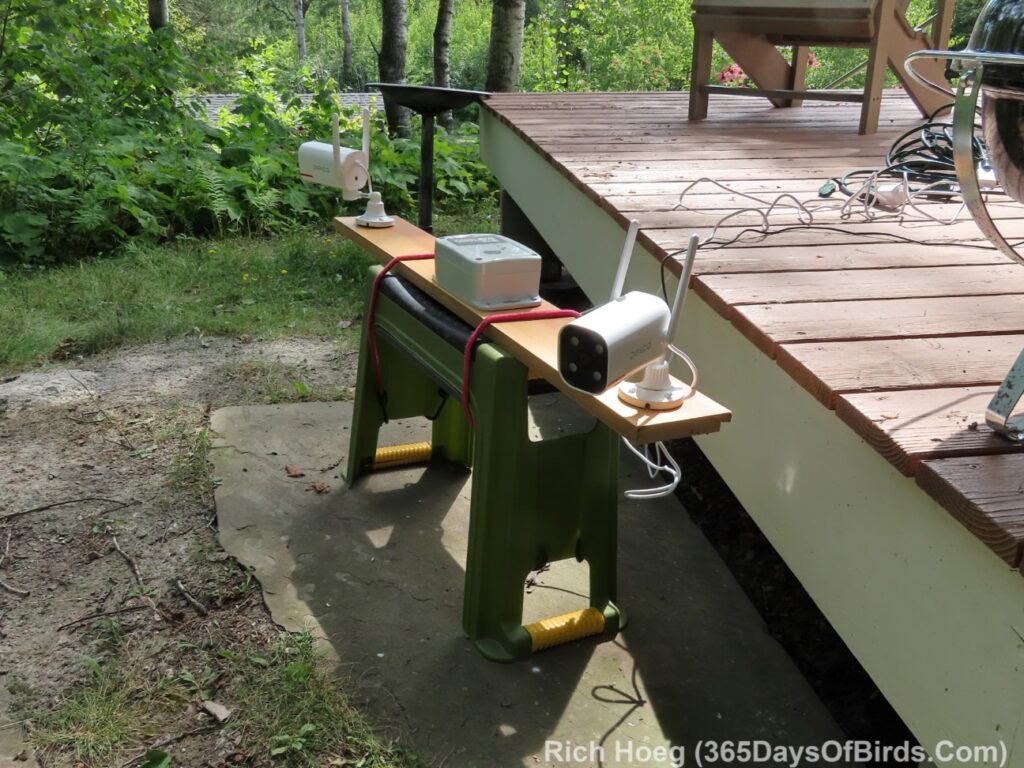
Here are a few comments before getting on to my initial review (I will update my review on this web page as I gain experience with the device):
<see much further down in this post for screenshots I annotated of the Haikubox app explaining how it works>
- Learn about the team behind Haikubox (impressive).
- Read the Haikubox FAQ on their website.
- As an owner of a Haikubox, you decide whether to make your box public (or not).
- You need NOT own a Haikubox to monitor “public” Haikuboxes
- Browse to Listen.Haikubox.Com (create a free account)
- Download this PDF guide to the Haikubox icons
- Choose and if desired, bookmark, Haikuboxes that display on the map.
- My Haikubox is public and sharing data with Cornell’s BirdNET (owner’s choice)
- My Haikubox name: Amity Creek & Gardens
- My birding habitat is a combination of boreal forest, meadow and small stream
- My Haikubox’s location is on the edge of Duluth, Minnesota in the Northwoods
- Link to what is SINGING IN MY YARD RIGHT NOW ! (no account required)
- There are a very limited number of public Haikuboxes as of today. The only other Haikubox in northern Minnesota is on the Gunflint Trail.
- In my estimation it would be EXTREMELY interesting to review data for geographic regions you might plan on birding in the near future. Unlike eBird reports, if a Haikubox is public, you will learn about ALL the bird species ID’d by a given box. Once again, knowing the box’s habitat would make the data MUCH more valuable. The owner knows the habitat, but you as a web page or app visitor will not. Finally, both BirdNET and Merlin from Cornell are not prefect in terms of ID’ing birds by sound, but the systems are pretty darned good, and getting better as they acquire more data.
Haikubox first impressions: The box including a five year subscription cost me $399 (post edit … 8 months later … there is now a $200 option). Should the box fail after one year (warranty period), but before the five year subscription expires I may purchase another box for $99. As a hard core birder, I was willing to pay the purchase price, but I doubt given this price many folks will ante up this kind of cash. However, birders do pay some amazing amounts of money to go on birding / photography tours. Who knows??
- In the first five days of ownership, I have been happy with the ID process (set at Medium). There have been a number of birds ID’d which I known are not present (Long-Eared and Barred Owls). My resident Great Horned Owls would attack any interlopers in their territory real quickly.
- Setup of my Haikubox was easy. I downloaded and installed the installation app, turned on my phone’s bluetooth and waited a few moments. The only input required from me was to input my wifi’s security password. After the one time install, I was able to delete the installation app and turn off my phone’s bluetooth service.
- The ID plus Notification System is sweet. It allows me to turn off notifications for bird species I know already live in my yard (or very nearby). In my case I would be inundated with Veery notifications if this capability was not present, yet the system is still recording the various veery species songs. Thus, I am not losing that data. During migration when new species are constantly arriving this feature will be extremely valuable.
- The one big feature that is missing is a public profile for Haikubox owners. Assuming an owner decides to make their box public, linking birding habitat and other data for the public would make Haikuboxes much more valuable … to the birding community at large, not me as the owner. I know who I am and where I live!
- My Haikubox has helped me learn have that two species of hawk hunt my bird feeders every day … normally twice per day. Given my feeders are up year round, and have been present for years, learning about these hunters should not have been surprising to me. However, like anyone, it is impossible to be aware of all the birds which use my Northwoods yard … till now. I was glad I could put up my Haikubox before songbirds finish their breeding season. Every morning my local birds start singing at 4:30 am which is 45 minutes before sunrise on June 25th. Within a few weeks the morning sing will go quiet for another year.
- Update to this blog post on June 26, 2023: I figured out it is possible to create a public link to my own Haikubox. One does NOT need use the app or website. Here is my AmityCreek & Gardens Haikubox.
- Update to this blog post on July 09, 2023: Here are two other features which I have discovered (and like) about my Haikubox:
- Haikubox allows the owner of the box to download all their bird ID’s. There are two files one may create and download … every birdsong ID over the past 30 days with ID confidence score … a list of all bird species ID’s with the total number of instances per species.
- Notifications for the owner may be highly customized. The two key notifications settings I particularly like is the ability to turn off all notifications for a given specie (like a crow), and to ALWAYS be notified for any new bird specie.
- Update to this blog post on August 26, 2023: There is an adjusted interface from HaikuBox in terms of reviewing the current and past sightings for a given location / HaikuBox. I have annotated screenshots of that adjusted part of their interface in this particular blogpost of mine.
As everyone says, a picture is worth a thousand words. Thus, here are some screenshots I took and annotated from my Haikubox App. Anyone (not just Haikubox owners) may download and install the Haikubox App:
- Apple App Store
- Google Play
- Listen.Haikubox.Com (any online device, no app required)
- All three options require a free account … no credit card info required.
Whether you use the web page service or app, similar images will load. Due to screen size and app vs web page, there may be minor differences. Press or click upon any image to view at full size. In addition, images may be downloaded.
Working our way across the top three left icons …
Note: I have “red-lined out” parts of the service on these screenshot which are only available to owners of a Haikubox.
The Home Page Icon
Homepage screenshot #1
Homepage screenshot #2 … scrolling further down the Home Page
The Map / Search Icon
Map screenshot #1
Map screenshot #2
The Notification Bell Icon
Working our way across the icons further down the page
All History Icon (backwards in time from the present)
Bird Statistics Icon
All Species History Icon (I only took a screenshots of a small part of my data / page. After just a few days, scrolling down my entire history page would 62 species)
screenshot starting from most common bird #1
end of post
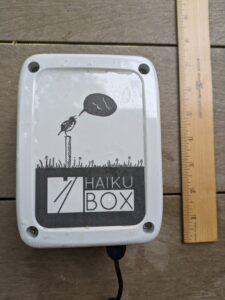
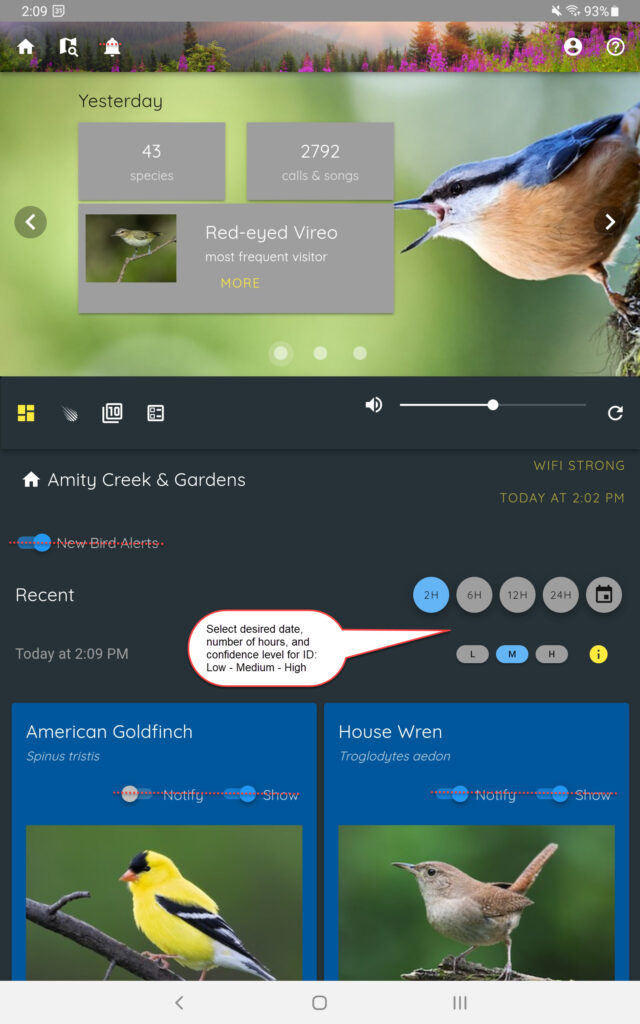
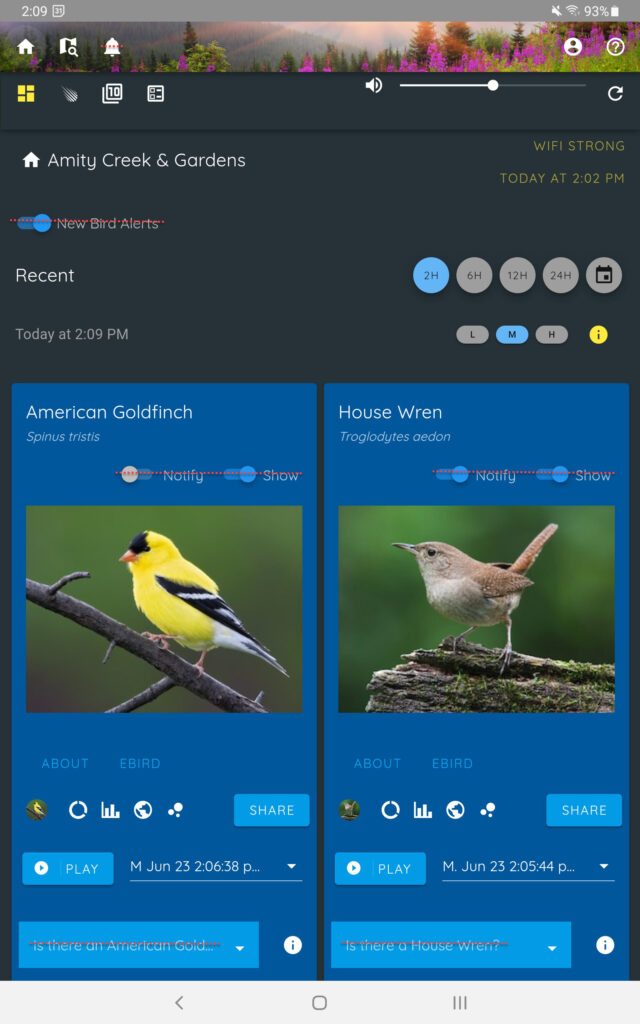
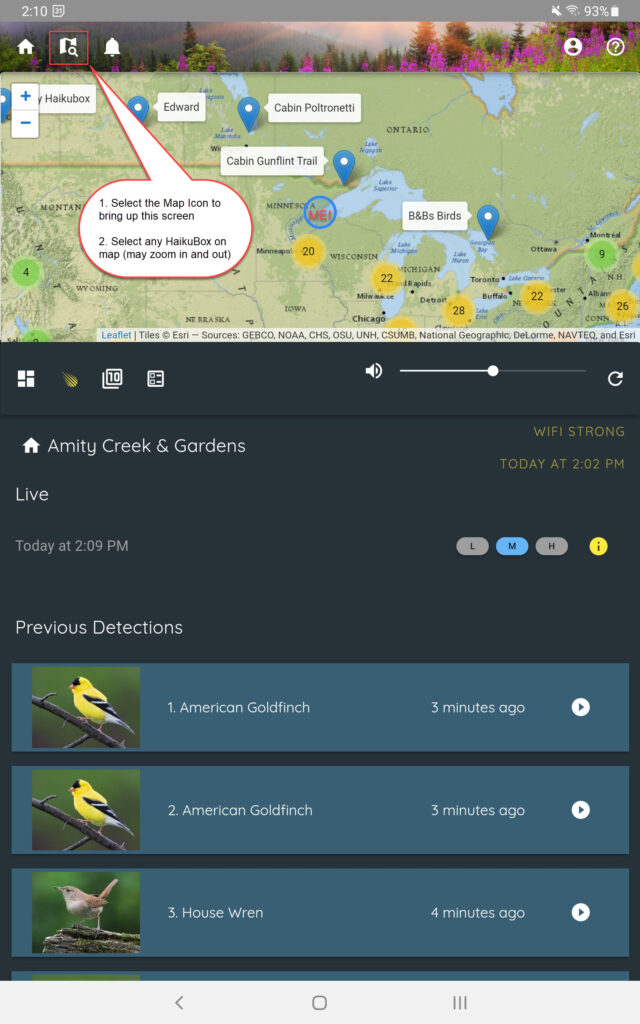
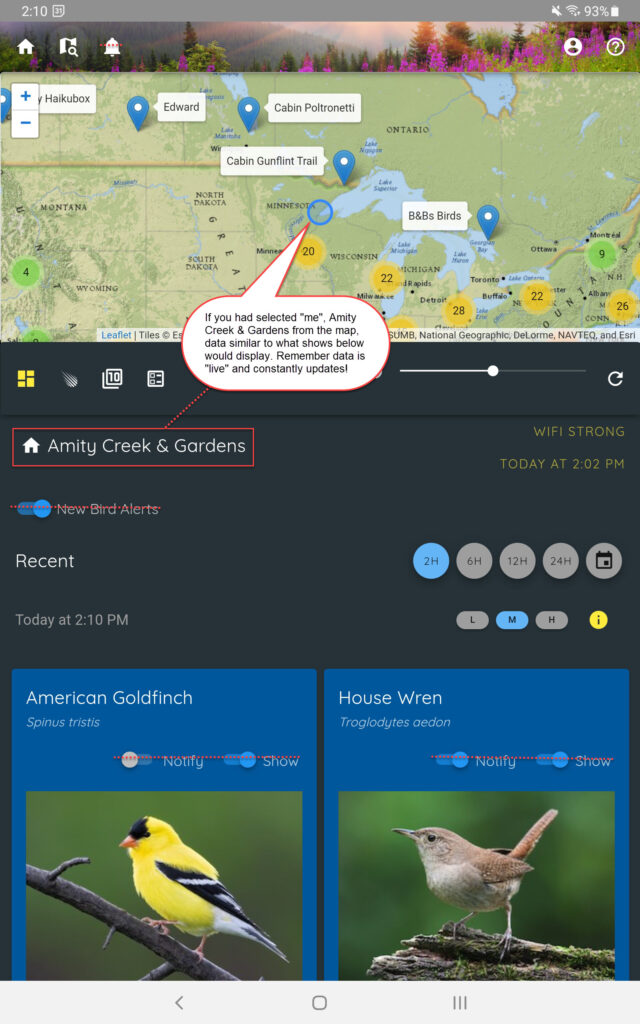
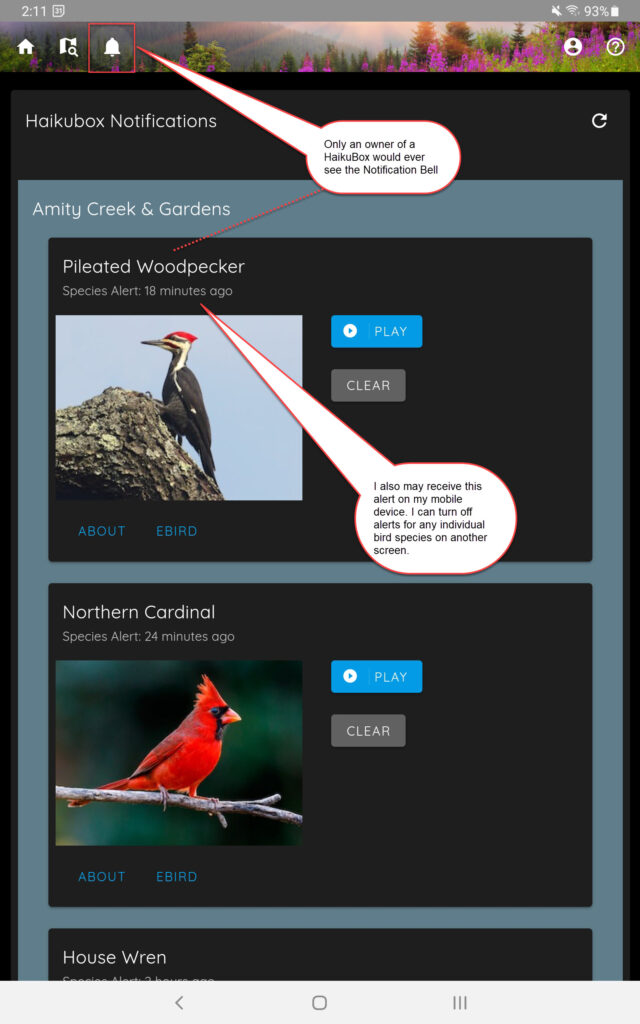
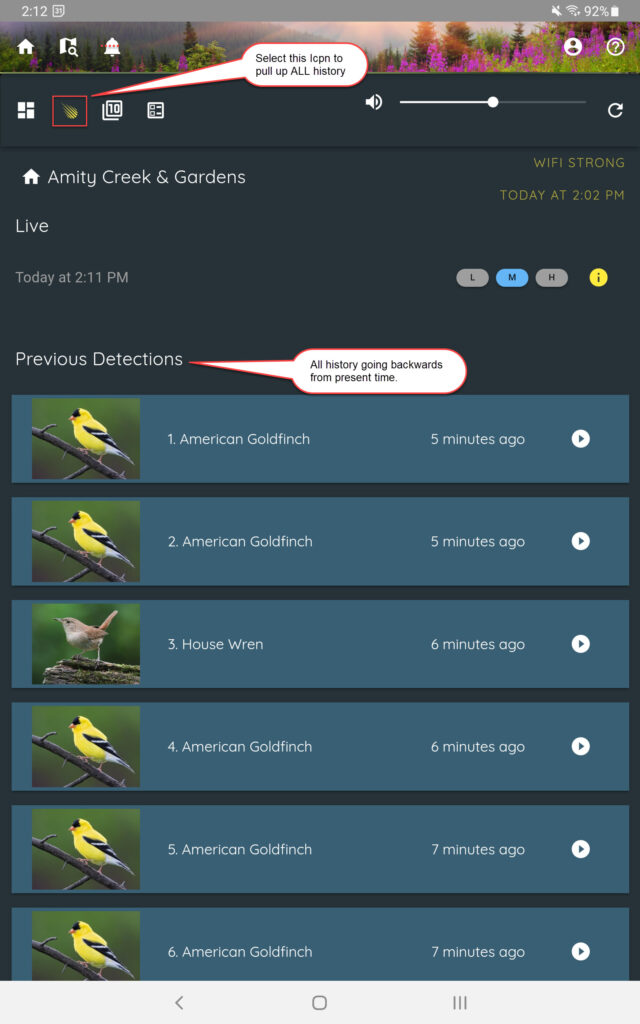
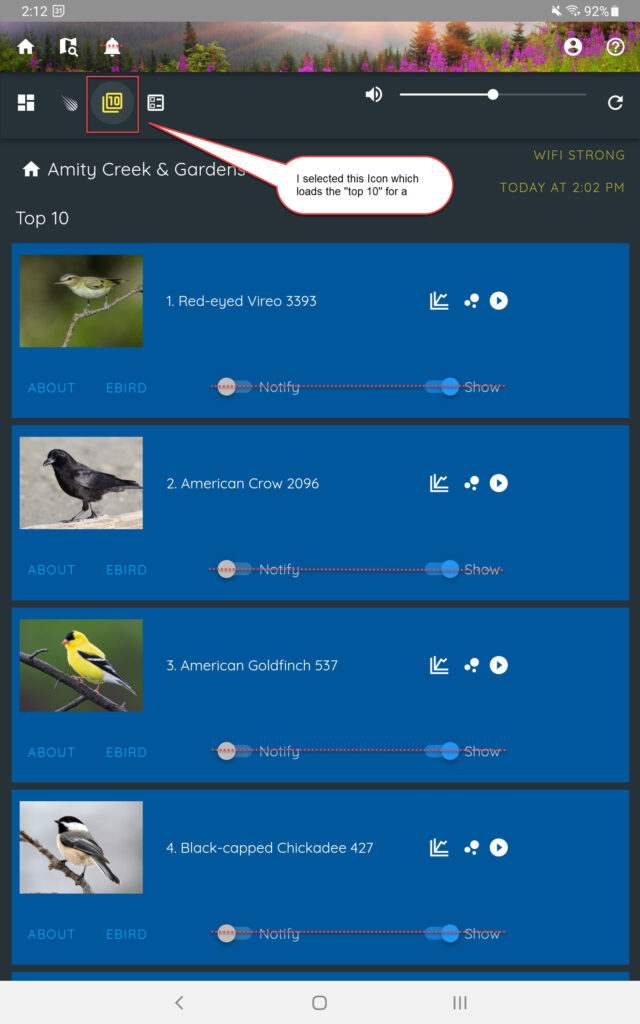
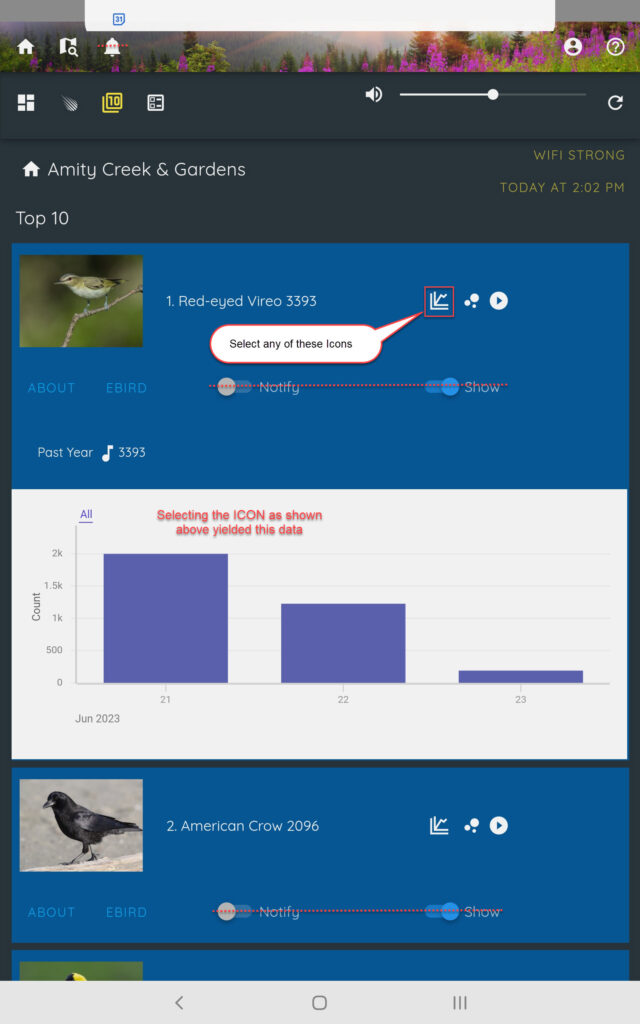
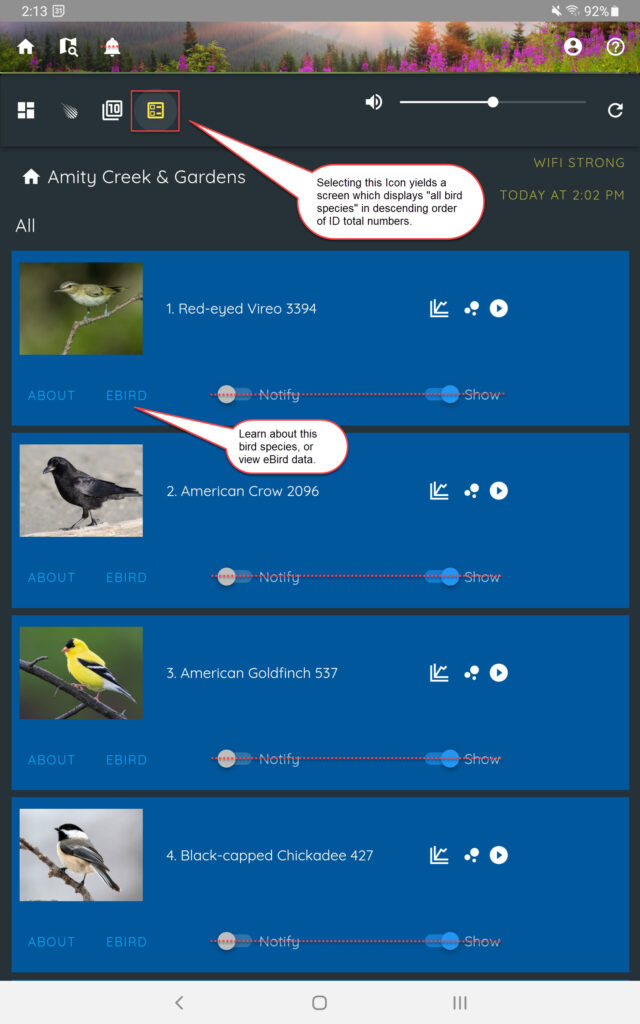
Your post inspired my to do something similar! My station is: https://app.birdweather.com/stations/1328 I wrote about how I did it here: https://anconafamily.com/tech/birdnet/
Hey Jim, how cool is that! Well done in terms of building your own system. I will update my actual post and link to your effort! Rich
My box already is public. Thus, anyone may see the data using either the apps or web page options.
Marvelous!!! Will your box be public? So jealous…